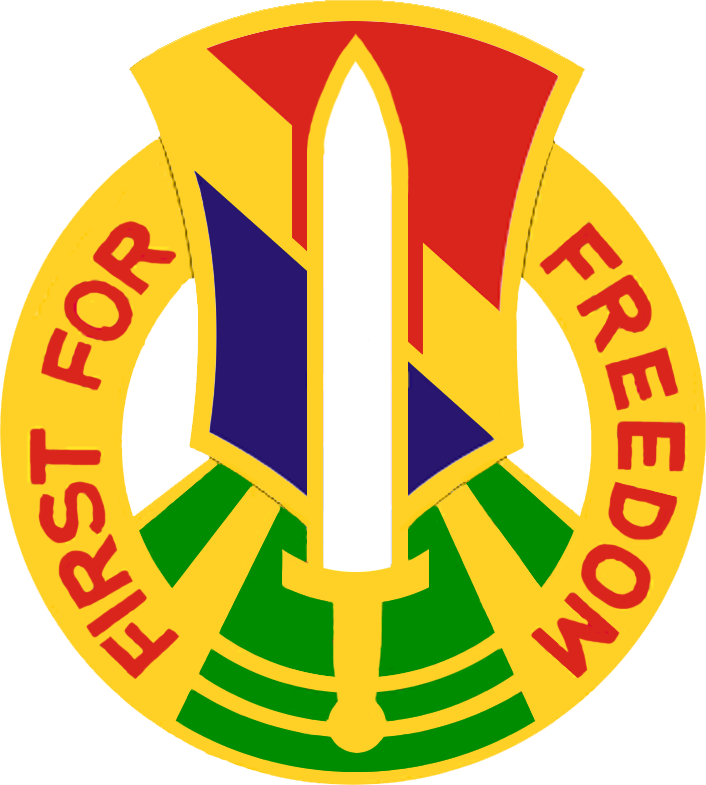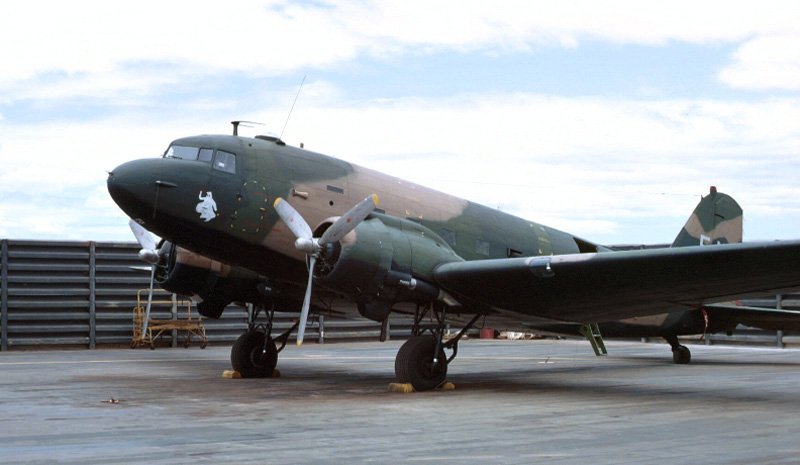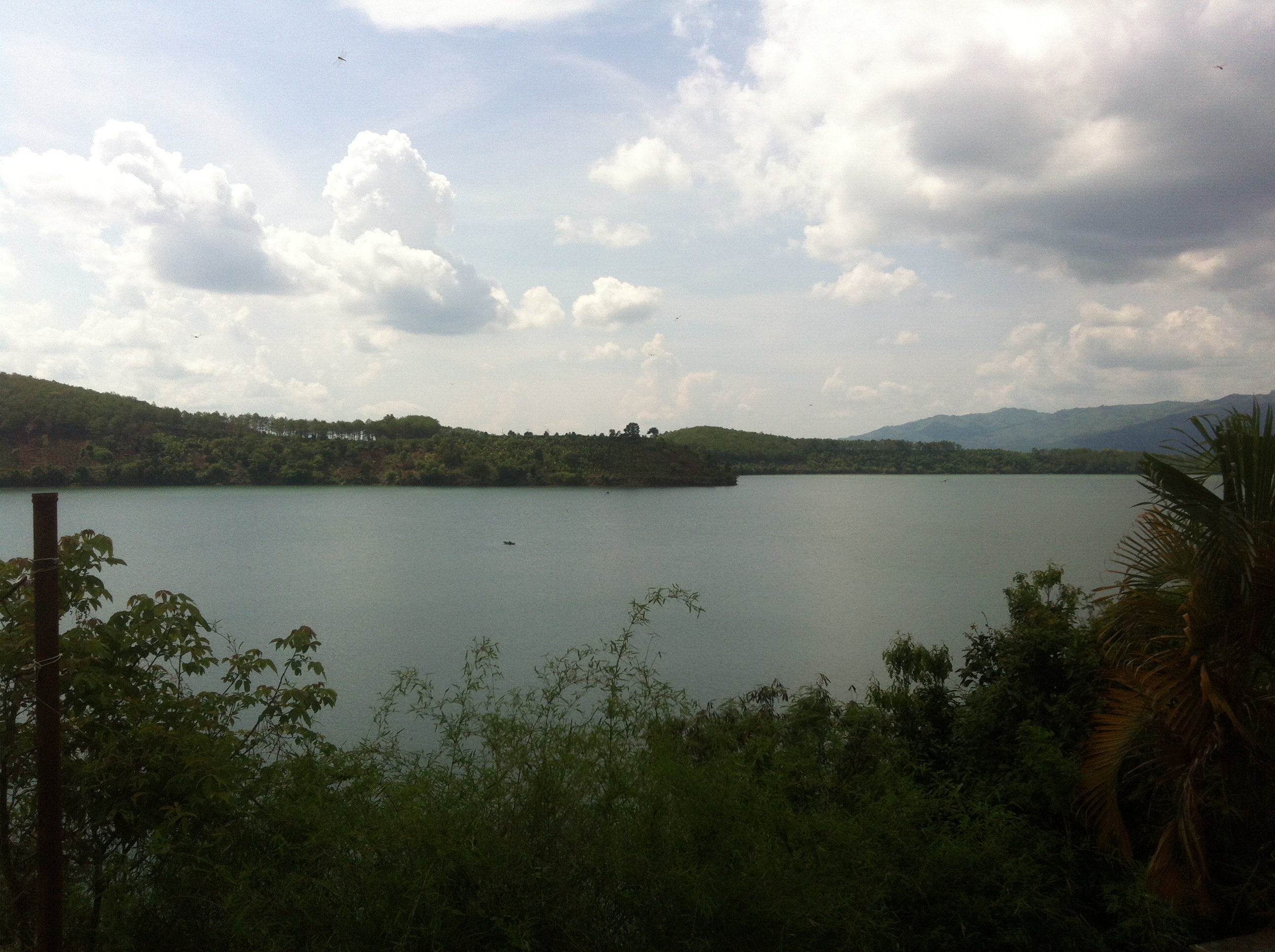|
Battle Of Duc Lap
The Battle of Duc Lap was a battle of the Vietnam War where North Vietnamese forces attempted to overrun the Civilian Irregular Defense Group (CIDG) Duc Lap Camp between 24 and 27 August 1968. Background In late July 1968 in developing their plans for the Phase III Offensive, the North Vietnamese politburo and People's Army of Vietnam (PAVN) chief of staff, General Văn Tiến Dũng decided that while the main area of operations would be Tây Ninh Province, the Central Highlands would be a secondary area of operations. The PAVN 1st Division was tasked with seizing the Duc Lap Camp and then moving northeast to threaten Buôn Ma Thuột. The PAVN 24th Regiment would cut Highway 14 between Buôn Ma Thuột and Pleiku. The 95C and 101D Regiments would make diversionary attacks on Allied bases across Kon Tum Province. Battle On the night of 23 August the 66th Regiment and the 20th Sapper Battalion gathered near Duc Lap Camp in preparation for their attack on the base while the 3 ... [...More Info...] [...Related Items...] OR: [Wikipedia] [Google] [Baidu] |
Vietnam War
The Vietnam War (also known by #Names, other names) was a conflict in Vietnam, Laos, and Cambodia from 1 November 1955 to the fall of Saigon on 30 April 1975. It was the second of the Indochina Wars and was officially fought between North Vietnam and South Vietnam. The north was supported by the Soviet Union, China, and other communist states, while the south was United States in the Vietnam War, supported by the United States and other anti-communism, anti-communist Free World Military Forces, allies. The war is widely considered to be a Cold War-era proxy war. It lasted almost 20 years, with direct U.S. involvement ending in 1973. The conflict also spilled over into neighboring states, exacerbating the Laotian Civil War and the Cambodian Civil War, which ended with all three countries becoming communist states by 1975. After the French 1954 Geneva Conference, military withdrawal from Indochina in 1954 – following their defeat in the First Indochina War – the Viet Minh to ... [...More Info...] [...Related Items...] OR: [Wikipedia] [Google] [Baidu] |
Central Highlands, Vietnam
Central Highlands ( vi, Cao nguyên Trung phần), Western Highlands ( vi, Tây Nguyên) or Midland Highlands ( vi, Cao nguyên Trung bộ) is one of the regions of Vietnam. It contains the provinces of Đắk Lắk, Đắk Nông, Gia Lai, Kon Tum, and Lâm Đồng. Provinces History The native inhabitants of the Central Highlands (Montagnards, Mountain peoples) are various peoples that mainly belonged to the two major Austronesian (Highland Chamic) and Austroasiatic ( Bahnaric) ethnolinguistic families. According to Peng et al. (2010) & Liu et al. (2020), Austronesian Chamic groups were well known of being seafarers with the original homeland of Taiwan, might have migrated to present-day Central Vietnam by sea from Maritime Southeast Asia around ~ 2,500 kya, while were making contact/or possibly absorbed the previously earlier Austroasiatic inhabitants (research shows shared high frequencies of AA-associated ancestry among Vietnam's Austronesian Chamic highlanders than ... [...More Info...] [...Related Items...] OR: [Wikipedia] [Google] [Baidu] |
17th Cavalry Regiment
The 17th Cavalry Regiment is a historical organization within the United States Army that began as a regiment of cavalry after the Pancho Villa Expedition. The unit was constituted on 1 July 1916 in the Regular Army as the 17th Cavalry at Fort Bliss, Texas and originally inactivated 26 September 1921 at the Presidio of Monterey, California. Formerly a part of the 1950s Combat Arms Regimental System, it was reorganized as a part of the U.S. Army Regimental System, an ongoing effort to maintain the lineage and history of the U.S. Army through its units. Today, the 17th Cavalry Regiment is found across the army within the combat aviation brigades, where the squadrons, now constituted as attack/recon helicopter squadrons, carry on the legacy of the 17th Cavalry Regiment. History Formation The 17th Cavalry Regiment was organized under the provisions of the National Defense Act of 1916 at Fort Bliss, Texas on 30 June 1916 and constituted on 1 July 1916. Brigadier General John J. Pers ... [...More Info...] [...Related Items...] OR: [Wikipedia] [Google] [Baidu] |
10th Cavalry Regiment (United States)
The 10th Cavalry Regiment is a unit of the United States Army. Formed as a segregated African-American unit, the 10th Cavalry was one of the original "Buffalo Soldier" regiments in the post–Civil War Regular Army. It served in combat during the Indian Wars in the western United States, the Spanish–American War in Cuba and in the Philippine–American War. The regiment was trained as a combat unit but later relegated to non-combat duty and served in that capacity in World War II until its deactivation in 1944. The 10th Cavalry was reactivated as an integrated combat unit in 1958. Portions of the regiment have served in conflicts ranging from the Vietnam War to Operation Enduring Freedom and Operation Iraqi Freedom. The current structure is by squadron, but with the 1st and 7th Squadrons recently deactivated, the 4th Squadron is the only 10th Cavalry Regiment unit in active service. It is assigned to the 3rd Armored Brigade Combat Team of the U.S. 4th Infantry Division at ... [...More Info...] [...Related Items...] OR: [Wikipedia] [Google] [Baidu] |
4th Infantry Division (United States)
The 4th Infantry Division is a division of the United States Army based at Fort Carson, Colorado. It is composed of a division headquarters battalion, three brigade combat teams (two Stryker and one armor), a combat aviation brigade, a division sustainment brigade, and a division artillery. The 4th Infantry Division's official nickname, "Ivy", is a play on words of the Roman numeral ''IV'' or 4. Ivy leaves symbolize tenacity and fidelity which is the basis of the division's motto: "Steadfast and Loyal". The second nickname, "Iron Horse", has been adopted to underscore the speed and power of the division and its soldiers. World War I The 4th Division was organized at Camp Greene, North Carolina on 10 December 1917 under the command of Maj. Gen. George H. Cameron. It was here they adopted their distinctive insignia, the four ivy leaves. The ivy leaf came from the Roman numerals for four (IV) and signified their motto "Steadfast and Loyal". The division was organized as p ... [...More Info...] [...Related Items...] OR: [Wikipedia] [Google] [Baidu] |
Tuy Hòa Base Camp
Tuy Hòa Base Camp (also known as Phú Hiệp Airfield or Phú Hiệp Army Airfield) is a former U.S. Army base southeast of Tuy Hòa in Phú Yên Province Vietnam. History The base was located approximately 5 km east of Highway 1 and 7 km southeast of Tuy Hoa Air Base. The base was used by the 1st Brigade, 4th Infantry Division comprising: * 1st Battalion, 8th Infantry * 3rd Battalion, 8th Infantry * 1st Battalion, 12th Infantry from October 1966 to June 1967. The 173rd Airborne Brigade The 173rd Airborne Brigade ("Sky Soldiers") is an airborne infantry brigade combat team (IBCT) of the United States Army based in Vicenza, Italy. It is the United States European Command's conventional airborne strategic response force for Eu ... was based at Tuy Hòa from October–November 1967. Other units stationed at Tuy Hòa/Phú Hiệp included: * 3rd Battalion, 22nd Infantry (December 1970-January 1972) * 91st Evacuation Hospital (December 1966-July 1969) * 203rd R ... [...More Info...] [...Related Items...] OR: [Wikipedia] [Google] [Baidu] |
503rd Infantry Regiment (United States)
The 503rd Infantry Regiment, formerly the 503rd Parachute Infantry Regiment (503rd PIR) and the 503rd Airborne Infantry Regiment (503rd AIR), is an airborne infantry regiment of the United States Army. The regiment served as an independent regiment in the Pacific War during World War II; at Fort Campbell, Kentucky; in Okinawa, Japan; and in Germany. Regimental elements have been assigned to the 2nd Infantry Division, the 11th Airborne Division, the 24th Infantry Division, 25th Infantry Division, the 82nd Airborne Division, 101st Airborne Division, and the 173rd Airborne Brigade Combat Team. Regimental elements have participated in campaigns in the Vietnam War, Operation Enduring Freedom–Afghanistan, and Operation Iraqi Freedom. The regiment claims 15 Medal of Honor recipients: two from World War II, ten from Vietnam, and three from Afghanistan. A parent regiment under the U.S. Army Regimental System. The regiment's 1st and 2nd Battalions are active, assigned to the 173 ... [...More Info...] [...Related Items...] OR: [Wikipedia] [Google] [Baidu] |
I Field Force, Vietnam
I Field Force, Vietnam was a corps-level command of the United States Army during the Vietnam War. Activated on 15 March 1966, it was the successor to Task Force Alpha, a provisional corps command created 1 August 1965 (renamed Field Force Vietnam on 25 September) for temporary control of activities of U.S. Army ground combat units arriving in Vietnam. I Field Force was a component of U.S. Military Assistance Command Vietnam (MACV) and had its headquarters at Nha Trang. Area of Responsibility and Units Assigned I Field Force's area of responsibility was II Corps Tactical Zone, later renamed Military Region 2, which comprised the twelve provinces of Vietnam's Central Highlands. Among the divisions and brigades it controlled were: * 1st Cavalry Division (Airmobile) * 4th Infantry Division *3d Brigade, 25th Infantry Division *1st Brigade, 101st Airborne Division *173rd Airborne Brigade * 41st Artillery Group *52nd Artillery Group *77th Radar Detachment *54th Signal Battalion ... [...More Info...] [...Related Items...] OR: [Wikipedia] [Google] [Baidu] |
Douglas AC-47 Spooky
The Douglas AC-47 Spooky (also nicknamed "Puff, the Magic Dragon") was the first in a series of fixed-wing gunships developed by the United States Air Force during the Vietnam War. It was designed to provide more firepower than light and medium ground-attack aircraft in certain situations when ground forces called for close air support. Design and development The AC-47 was a United States Air Force (USAF) C-47, (the military version of the DC-3) that had been modified by mounting three 7.62 mm General Electric miniguns to fire through two rear window openings and the side cargo door, all on the left (pilot's) side of the aircraft, to provide close air support for ground troops. Other armament configurations could also be found on similar C-47-based aircraft around the world. The guns were actuated by a control on the pilot's yoke whereby he could control the guns either individually or together, although gunners were also among the crew to assist with gun failures and si ... [...More Info...] [...Related Items...] OR: [Wikipedia] [Google] [Baidu] |
Satchel Charge
250px, Weapons used in the Winter War. The original Finnish satchel charge is on the left. A satchel charge is a demolition device, primarily intended for combat, whose primary components are a charge of dynamite or a more potent explosive such as C-4 plastic explosive, a carrying device functionally similar to a satchel or messenger bag, and a triggering mechanism; the term covers both improvised and formally designed devices. In World War II, combat engineers used satchel charges to demolish heavy stationary targets such as rails, obstacles, blockhouses, bunkers, caves, and bridges. The World War II–era United States Army M37 Demolition Kit contained eight blocks of high explosive, with two priming assemblies, in a canvas bag with a shoulder strap. Part or all of this charge could be placed against a structure or slung into an opening. It was usually detonated with a pull igniter. When used as an anti-tank weapon, charges were sufficient to severely damage the tracks. ch ... [...More Info...] [...Related Items...] OR: [Wikipedia] [Google] [Baidu] |
Pleiku
Pleiku is a city in central Vietnam, located in the Central Highlands region. It is the capital of the Gia Lai Province. Many years ago, it was inhabited primarily by the Bahnar and Jarai ethnic groups, sometimes known as the Montagnards or Degar, although now it is inhabited primarily by the Kinh ethnic group. The city is the centre of the urban district of Pleiku which covers an area of 261 km². As of 2003 the district had a population of 186,763. The city sits at the junction of several national roads— National Route 14 to Kon Tum in the north and Buôn Ma Thuột in the south and National Route 19 to Stœng Trêng in Cambodia in the west (via Ratanakiri Province) and to Bình Định Province in the east. The city is home to the Hoàng Anh Gia Lai football club. Pleiku is served by Pleiku Airport in the near outskirts of the city. History First Indochina War At the end of the First Indochina War, in June 1954, the French Army ''Groupe Mobile 100'' was orde ... [...More Info...] [...Related Items...] OR: [Wikipedia] [Google] [Baidu] |






